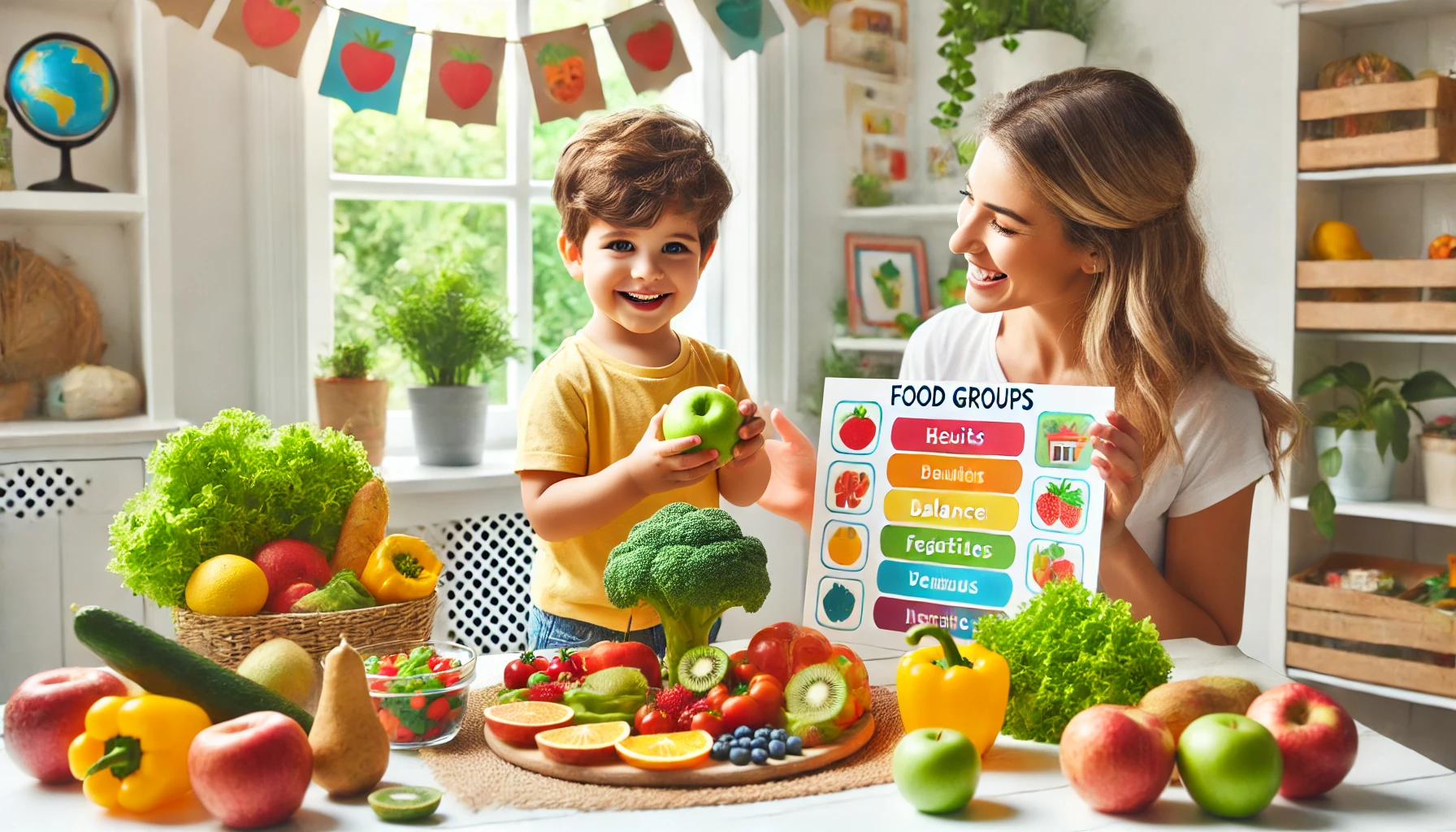How to Teach Young Children About Healthy Eating and Nutrition
Teaching young children about healthy eating and nutrition builds the foundation for lifelong well-being. When children learn to make smart food choices early, they are more likely to maintain healthy habits as they grow. Parents can help by modeling good eating behaviors, introducing a variety of foods, and making nutrition fun and engaging. In this article, we’ll explore practical ways to help kids understand the importance of eating well.
Why Healthy Eating Education Matters for Kids
- Supports physical growth and development – Provides essential nutrients for strong bones and muscles.
- Boosts focus and energy – Helps children stay alert and active throughout the day.
- Develops lifelong healthy habits – Encourages kids to choose balanced meals and snacks.
- Prevents health issues – Reduces the risk of obesity and other chronic conditions.
- Encourages a positive relationship with food – Promotes mindful eating and variety.
1. Teach Kids the Basics of Food Groups
Introducing the main food categories helps kids understand what a balanced meal looks like.
Activity Idea:
- Create a colorful food chart showing fruits, vegetables, grains, proteins, and dairy.
- Let children sort plastic or paper food models into the correct groups.
- Use a MyPlate visual to show portions for each group on a plate.
What Kids Learn:
- That each food group plays a role in keeping their body strong.
- How to recognize and include different foods in their meals.
- The value of variety in their diet.
2. Make Mealtime Fun and Interactive
Involving kids in meal preparation gets them excited about food and trying new things.
Activity Idea:
- Let children help wash veggies, stir batter, or assemble sandwiches.
- Create “build-your-own” meals, like taco night or salad bowls.
- Encourage food art: “Let’s make a face using fruit slices!”
What Kids Learn:
- That cooking and eating are creative, enjoyable experiences.
- How to appreciate the effort behind preparing food.
- The importance of trying new foods without pressure.
3. Encourage Healthy Snack Habits
Snacking is part of most kids’ routines—make it count with nutritious options.
Activity Idea:
- Offer snacks like apple slices with peanut butter, yogurt with berries, or veggie sticks with hummus.
- Let kids build their own snack plates from healthy choices.
- Teach the phrase: “Fuel your body with good stuff!”
What Kids Learn:
- That snacks can be both tasty and nutritious.
- How to choose foods that give energy and focus.
- The idea of balance between fun and health.
4. Talk About What Food Does for the Body
Connecting food to function helps kids understand why certain choices matter.
Activity Idea:
- Explain that carrots help your eyes, milk makes bones strong, and bananas give energy.
- Use toys or charts to show how the body needs “fuel” to run well.
- Ask, “How does this food help you?” when eating meals.
What Kids Learn:
- How food affects their health and growth.
- Why eating different foods helps different parts of the body.
- The power of food as fuel, not just fun.
5. Read Books About Nutrition and Food Choices
Books can simplify complex concepts and make learning about food more relatable.
Activity Idea:
- Read Good Enough to Eat by Lizzy Rockwell (explains nutrition for kids).
- Follow the book with a related cooking or snack activity.
- Encourage kids to create a “menu” of healthy meals after reading.
What Kids Learn:
- That food education can be fun and inspiring.
- How others make healthy choices in stories.
- Ways to apply what they read in real life.
6. Create a Positive Eating Environment
The way kids feel at the table affects their food attitudes.
Activity Idea:
- Eat meals together as a family without screens.
- Use positive language about food: “This gives your brain power!”
- Avoid pressuring kids to clean their plate—encourage listening to hunger cues.
What Kids Learn:
- That meals are an enjoyable time to connect and nourish.
- How to eat mindfully and pay attention to their bodies.
- That they’re trusted to make good decisions about food.
7. Introduce the Idea of “Always” vs. “Sometimes” Foods
Teaching moderation helps children develop a balanced approach to eating.
Activity Idea:
- Sort foods into two categories: “Everyday foods” (fruits, veggies, lean proteins) and “Sometimes foods” (sweets, chips, soda).
- Explain that “Sometimes foods” are okay, just not all the time.
- Create a “traffic light” system: green (go), yellow (slow), red (rare).
What Kids Learn:
- That moderation is key to healthy eating.
- How to enjoy treats without overindulging.
- The value of making thoughtful food choices.
8. Praise Healthy Choices and Effort
Positive reinforcement encourages kids to stay motivated and mindful.
Activity Idea:
- Say, “Great job choosing water instead of soda today!”
- Use a Healthy Habits Chart to track food choices or trying new vegetables.
- Let kids plan a healthy meal for the family as a reward.
What Kids Learn:
- That their efforts to eat well are recognized.
- How their choices impact their bodies and energy.
- The confidence to keep trying new, nutritious foods.
Final Thoughts
Teaching young children about healthy eating and nutrition gives them the tools to care for their bodies and make smart decisions about food. Through fun, hands-on experiences and consistent encouragement, kids can build habits that support lifelong wellness and a love for nutritious meals.
